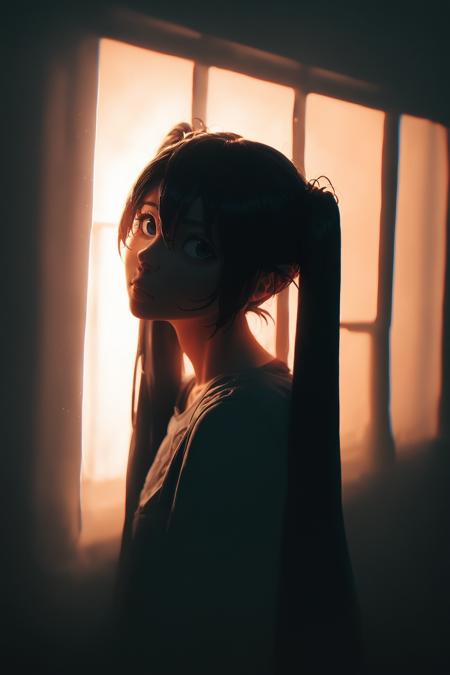A liminal space inside an empty high school, where the air is thick with an eerie stillness. The fluorescent lights buzz faintly, casting a cold, artificial glow onto the polished linoleum floors. Rows of gray metal lockers stretch endlessly down the hallway, their doors covered in faint scratches and the remnants of long-faded stickers. The smell of old textbooks, industrial cleaning supplies, and distant rain lingers in the air. The classroom doors are shut, their small windows revealing nothing but darkness. A lonely bulletin board by the principal’s office displays outdated announcements, faded student council posters, and a forgotten flyer for a dance that happened long ago. The cafeteria, visible through an open doorway, is empty—rows of plastic chairs neatly stacked, the serving area abandoned, the faint scent of reheated food still clinging to the air. A single clock above the lockers ticks softly, though the time no longer seems to matter. Somewhere in the distance, the sound of a dripping faucet echoes through the silence. The school is frozen in time, suspended in an endless after-hours void—familiar, yet unsettling. You’ve been here before, or maybe only in a dream. Either way, you know one thing for sure: you’re alone here.




![score_9, score_8_up, score_7_up, 1girl, Dora the Explorer, inside shower, showering, hands in hair, light from behind, dimm Lighting, sweat, Brown Skin, large and thin neck, thin, fit body, small ass, small waist, small chest, wide eyes, brown eyes, Brown short hair, Bob, small breasts, flat chest, puffy nipples, ((cute thigh highs):1.6), Soap on Body, no panties, dripping wet, no top, hips forward, standing straight [speech bubble : (one exclamation mark:1.1):0.2]](https://image.civitai.com/xG1nkqKTMzGDvpLrqFT7WA/23ffd6a4-c6dd-4b3b-b214-e670f0139c89/width=450/23ffd6a4-c6dd-4b3b-b214-e670f0139c89.jpeg)















